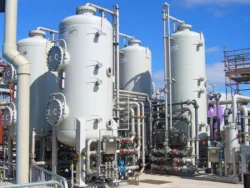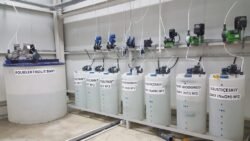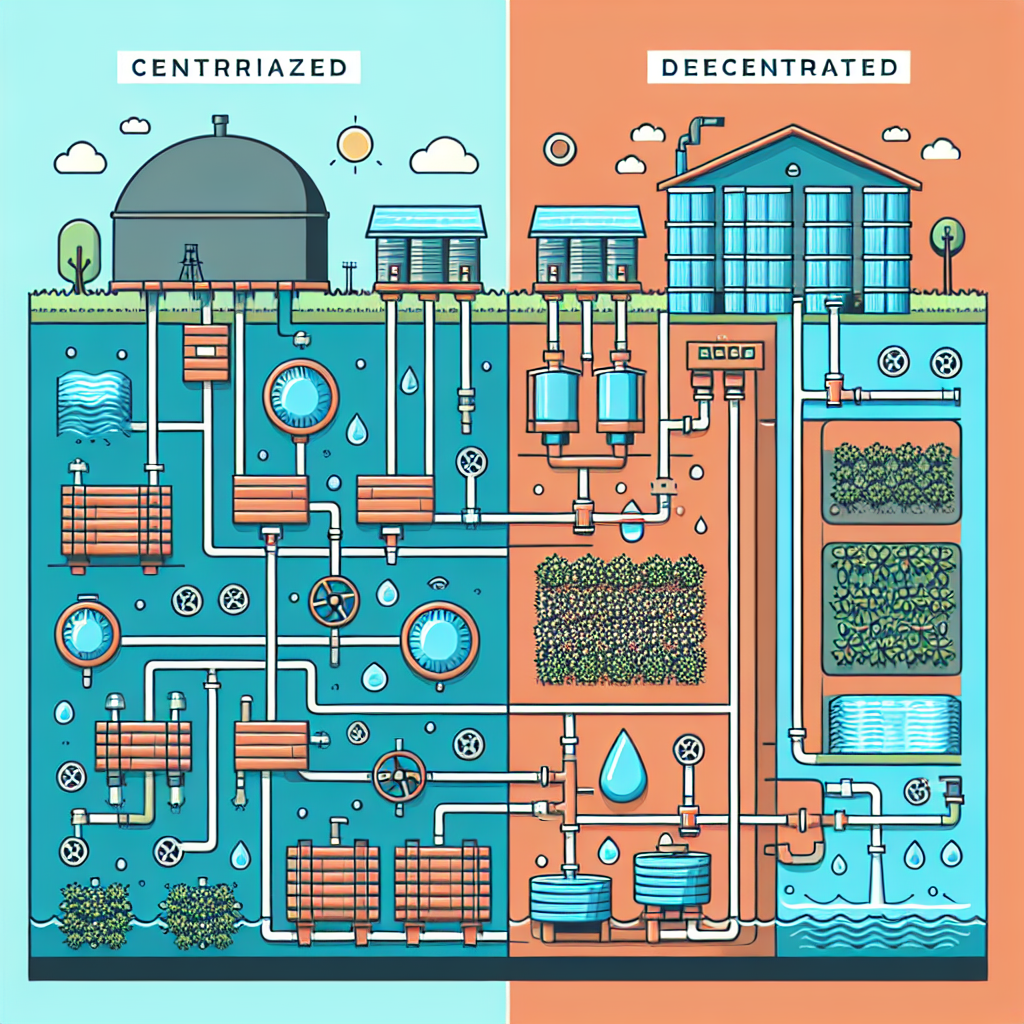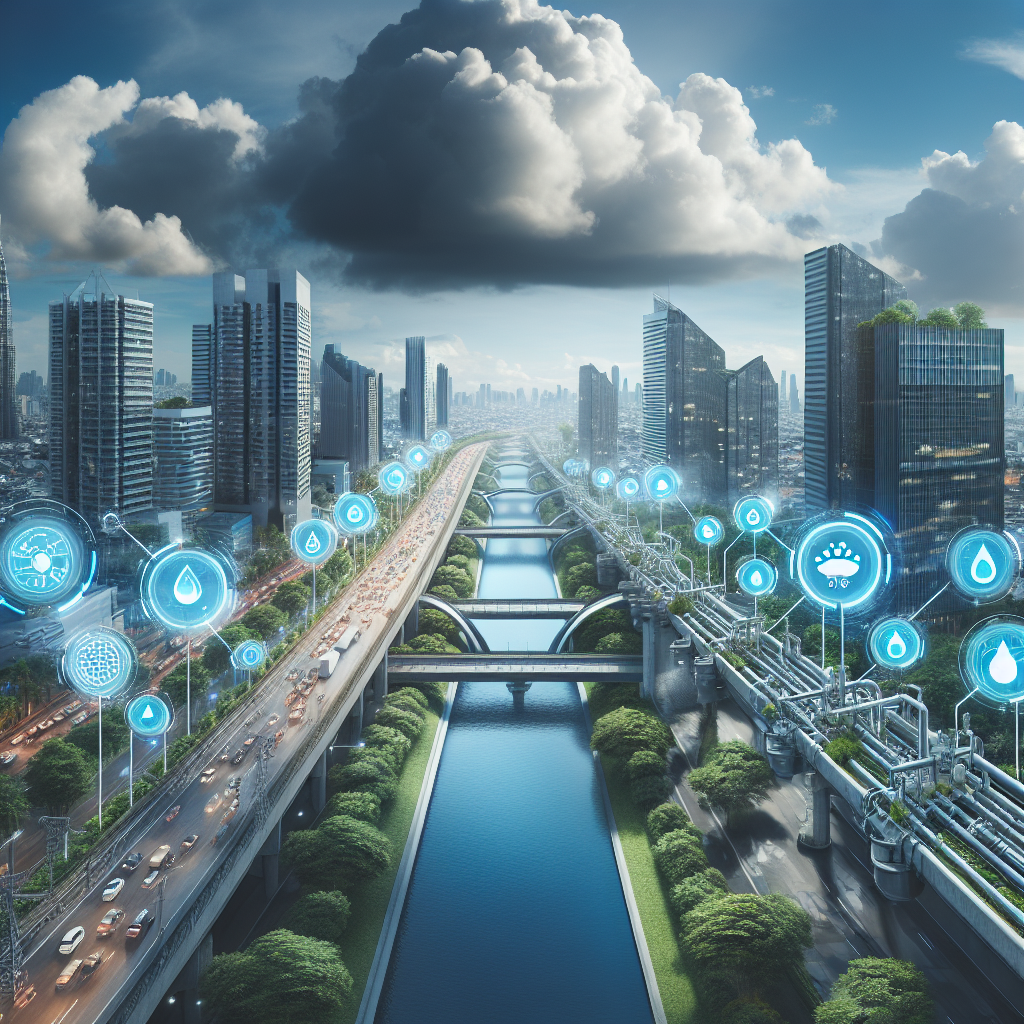Modern Water Distribution Methods: Engineering the Flow of Clean Water
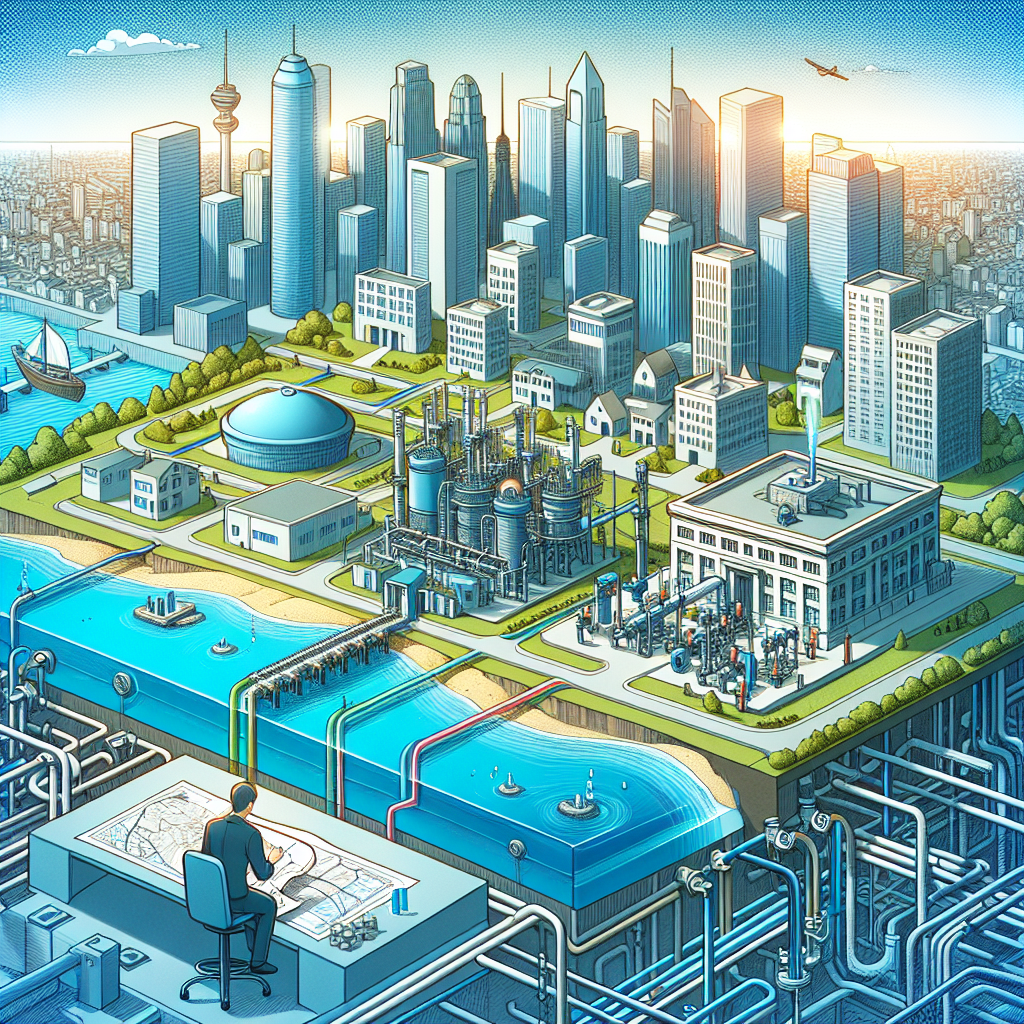
Modern Water Distribution Methods: Engineering the Flow of Clean Water
Introduction
Welcome to the world of modern water distribution methods where engineering meets the essential need for clean, potable water. Whether you’re quenching the thirst of a bustling city or providing irrigation for a rural farm, understanding these methods is crucial. Think of it as the plumbing of civilization: without efficient water supply systems, we’d be back to hauling buckets from wells like it’s 1899!
In this post, we’ll dive deep into the various water delivery methods that keep our taps flowing and our crops thriving. From sophisticated urban water management techniques to simple gravity-fed systems in the countryside, there’s a fascinating array of solutions designed to meet our ever-growing demand for water.
The journey begins with an overview of how these systems have evolved over time. Did you know that ancient civilizations used aqueducts not just for aesthetics but as essential conduits for their water supply? Fast forward to today, where we leverage advanced metering infrastructure and smart grids to enhance operational efficiency and reduce waste.
Key Takeaway: Understanding modern water distribution methods is vital for municipalities, engineers, and anyone involved in water management. These systems not only ensure access to clean water but also play a critical role in sustainability efforts.
So grab your hard hat and let’s explore how we can engineer the flow of clean water into every home, farm, and factory because everyone deserves a sip!
Overview of Water Distribution Methods
Water distribution methods are the backbone of our water supply systems, ensuring that clean, potable water reaches every tap, shower, and garden hose. These methods are crucial for effective water management techniques that cater to both urban and rural populations.
Historically, the journey of water from source to consumer has evolved dramatically. Ancient civilizations relied on gravity-fed systems and aqueducts to transport water over long distances. Fast forward to today, and we have a plethora of sophisticated water delivery methods that can be tailored to meet the needs of various communities.
- Definition: Water distribution methods encompass all techniques used to deliver water from treatment facilities to end-users.
- Importance: Efficient water distribution is essential for public health, agricultural productivity, and industrial operations.
- Historical Context: The evolution from simple gravity-fed aqueducts to advanced pressure-driven systems illustrates our growing understanding of hydraulic modeling in water networks.
Consider this: in a world where non-revenue water can account for up to 30% of a municipality’s supply (that’s like pouring money down the drain!), it becomes clear that optimizing our distribution methods is not just a technical challenge but an economic imperative.
The advent of smart grid technology has revolutionized how we approach these systems. With tools like SCADA systems for real-time monitoring and advanced metering infrastructure, municipalities can enhance operational efficiency while improving service delivery. This integration with GIS technology allows for precise demand forecasting models that can adapt to changing community needs.
Moreover, community-based water management approaches are gaining traction as they empower local populations to take charge of their own resources. This decentralized strategy not only fosters sustainability but also enhances resilience against emergencies in water distribution networks.
The future looks bright for efficient water delivery solutions. As we continue to innovate with sustainable practices such as leak detection technologies and non-revenue water reduction strategies, we pave the way for a more reliable and equitable access to clean drinking water across diverse landscapes.
Types of Water Distribution Systems
When it comes to water distribution methods, there’s no one-size-fits-all solution. Different systems cater to unique needs, from bustling urban centers to serene rural landscapes. Let’s dive into the main types of water distribution systems that keep the H2O flowing smoothly.
Centralized Water Distribution Systems
Think of centralized water distribution systems as the big leagues of water supply. These systems serve large populations and are typically managed by municipalities. They rely on a network of pipes, pumps, and treatment facilities to deliver potable water directly to homes and businesses.
Key Features:
- High capacity for urban areas
- Usually includes advanced metering infrastructure for efficiency
- Takes advantage of economies of scale in management and operation
Decentralized Water Systems
If centralized systems are the superheroes, decentralized systems are the clever sidekicks flexible and resourceful! These setups are perfect for rural or remote areas where extending pipelines is impractical. They often rely on local sources like wells or rainwater harvesting.
Gravity-Fed Water Systems
Gravity-fed water systems are nature’s way of reminding us that sometimes the simplest solutions are the best. Utilizing the natural slope of terrain, these systems transport water downhill without needing pumps. Talk about saving energy!
“Gravity-fed systems can significantly reduce operational costs while improving sustainability in rural areas.”
Pressure-Driven Water Systems
Now, let’s crank up the pressure! Pressure-driven water distribution methods use pumps to maintain flow and ensure that even the highest buildings get their fair share of liquid gold. These systems are essential in urban environments where elevation changes can be a challenge.
Benefits:
- Ensures consistent pressure across all delivery points
- Aids in efficient leak detection strategies through monitoring pressure changes
- Can be integrated with smart grid technology for real-time adjustments
No matter which system you choose, understanding these types is crucial for effective water management techniques. Each method has its pros and cons, influenced by factors like geography, population density, and available resources.
The takeaway? Whether you’re managing a bustling city or a quiet countryside community, selecting the right water delivery method is key to ensuring everyone has access to clean, safe drinking water.
Municipal vs. Rural Water Distribution Techniques
When it comes to water distribution methods, the divide between municipal and rural systems is as clear as a pristine mountain stream versus a bustling city aqueduct. Each has its own unique challenges, strategies, and quirks that make them fascinating to explore.
Urban Water Systems and Challenges
Municipal water distribution systems are the lifeblood of urban areas, designed to deliver potable water efficiently to millions of residents. These systems often rely on:
- Centralized water supply: A large treatment facility processes water before it’s piped through an extensive network of pipelines.
- Pressure-driven systems: Utilizing pumps to maintain the necessary pressure for water delivery, ensuring every tap in high-rise buildings flows freely.
- Advanced metering infrastructure: Smart meters that help monitor consumption patterns and detect leaks in real time, reducing non-revenue water.
However, urban systems face significant challenges, including:
- Aging infrastructure: Many cities are grappling with outdated pipes that lead to leaks and inefficiencies.
- Diverse demand: Fluctuations in usage due to varying population densities can strain resources.
- Contamination risks: Urban runoff can introduce pollutants into the water supply if not managed properly.
Rural Water Distribution Strategies
On the flip side, rural areas often employ different strategies for their water delivery methods. Here’s how they typically operate:
- Decentralized systems: Many rural communities utilize smaller localized systems or even individual wells for domestic needs.
- Gravity-fed systems: Utilizing natural elevation changes to transport water without the need for pumps think of it as nature’s own lazy river!
- Irrigation distribution methods: In agricultural settings, efficient irrigation techniques are vital for crop production and sustainability.
The beauty of rural water management lies in its community-based approach. Residents often come together to develop sustainable practices that cater specifically to their needs, emphasizing local knowledge and resourcefulness. However, this can also mean that access to advanced technologies seen in urban environments is limited.
The key takeaway? While municipal systems might be more complex with their technological advancements and centralized management, rural areas shine with their simplicity and community-driven solutions. Both have lessons to teach us about effective water distribution methods!
Pipelines and Aqueducts for Efficient Transport
When it comes to water distribution methods, pipelines and aqueducts are the unsung heroes of the water supply world. Think of them as the highways and byways of our water delivery systems, ensuring that every drop gets to where it needs to be without unnecessary detours.
Pipelines in Urban and Rural Settings
Pipelines are like the veins of a city, transporting potable water from treatment plants right to your tap. In urban areas, these pipelines must navigate through a maze of infrastructure, often facing challenges like aging systems and increasing demand. But fear not! With modern engineering techniques, including hydraulic modeling in water networks, cities can optimize their pipeline layouts to enhance efficiency.
Did you know? A well-designed pipeline network can reduce operational costs by up to 30% through effective leak detection and pressure management!
Aqueducts for Large-Scale Supply Needs
Now let’s take a moment to appreciate aqueducts. These architectural marvels are not just relics from ancient Rome; they are still incredibly relevant today! Aqueducts are designed for large-scale supply needs, particularly in areas where gravity-fed systems can transport water over long distances without the need for extensive pumping.
For instance, California’s State Water Project uses a sophisticated system of aqueducts that deliver water from Northern California to millions in the south. This is a prime example of how effective water management techniques can ensure sustainable access to clean water across vast regions.
The Future of Water Transport
As we look ahead, the integration of smart technologies into pipeline and aqueduct systems is paving the way for more efficient water delivery methods. With advancements like SCADA systems for real-time monitoring and remote sensing in hydrology, we can anticipate leaks before they become costly problems.
“The future of water distribution lies in our ability to innovate while respecting our natural resources.” – Water Management Expert
In summary, whether it’s pipelines snaking through urban jungles or majestic aqueducts spanning valleys, these transport methods play a crucial role in our overall water management strategies. By investing in these infrastructures today, we not only address current demands but also pave the way for future generations to enjoy reliable access to clean water.
Advanced Technologies in Water Management
In the quest for efficient water distribution methods, advanced technologies are transforming the landscape of water management. Imagine a world where every drop of water is accounted for, leaks are detected before they become a flood, and data drives decision-making. Welcome to the future!
SCADA Systems for Real-Time Monitoring
Supervisory Control and Data Acquisition (SCADA) systems are like the superheroes of water management. These sophisticated systems allow municipalities to monitor their water supply systems in real-time, providing critical data on pipeline pressures, flow rates, and reservoir levels. With SCADA, operators can:
- Quickly identify issues before they escalate into major problems.
- Optimize the performance of municipal water distribution networks.
- Enhance emergency response capabilities during crises.
Advanced Metering Infrastructure for Efficiency
Enter the realm of smart meters! Advanced metering infrastructure (AMI) is revolutionizing how we think about water usage. These smart devices track consumption patterns and help reduce non-revenue water water that is produced but not billed to customers. Here’s how AMI enhances efficiency:
- Zonal Metering: By breaking down urban areas into district metered areas (DMAs), utilities can pinpoint leaks more effectively.
- Demand Forecasting: Integration with GIS technology allows for better planning and operational efficiency.
- User Engagement: Consumers get real-time feedback on their usage, promoting conservation.
Leak Detection Technologies
No one likes a leaky faucet especially when it’s part of a municipal system! Innovative leak detection technologies utilize remote sensing and hydraulic modeling to minimize losses in urban water systems. This proactive approach not only saves money but also conserves precious resources. Key strategies include:
- Acoustic Sensors: Listening for the telltale sounds of leaks underground.
- Smart Pipe Technology: Using sensors embedded in pipelines to detect changes in pressure or flow that indicate a leak.
- Aerial Surveillance: Drones equipped with thermal imaging cameras can spot leaks from above talk about high-tech!
The Takeaway:
The integration of these advanced technologies not only enhances efficiency but also promotes sustainable practices in water distribution. As municipalities embrace these innovations, they pave the way for smarter, more resilient urban water systems that can adapt to future challenges.
Sustainable Practices in Water Distribution
As we navigate the waters of modern water distribution methods, embracing sustainability is not just a trend it’s a necessity. Think of it as the lifebuoy that keeps our water supply systems afloat in the face of climate change and growing populations. Let’s dive into some sustainable practices that are making waves in the industry!
Leak Detection and Non-Revenue Water Reduction Strategies
Imagine a bustling city where every drop of water counts, yet a significant portion is lost to leaks. Enter leak detection technologies, the unsung heroes of efficient water delivery methods. By employing smart sensors and hydraulic modeling in water networks, municipalities can identify leaks faster than you can say “non-revenue water.” This not only saves precious resources but also reduces operational costs.
Did You Know? According to recent studies, up to 30% of treated water can be lost through leaks in municipal systems! Implementing effective leak detection can drastically cut down this waste.
Community-Based Water Management Approaches
Sustainable water distribution isn’t just about technology; it’s about people too! Community-based water management practices empower local residents to take charge of their own water supply systems. This approach fosters ownership and accountability while enhancing local knowledge about efficient water delivery methods. Whether it’s through decentralized water systems or grassroots initiatives for potable water distribution, community engagement can lead to innovative solutions tailored to specific needs.
Integrated Water Management Techniques
It’s time to think outside the pipeline! Integrated approaches that combine various water management techniques like rainwater harvesting and greywater reuse are becoming increasingly popular. These methods optimize existing resources and ensure that urban and rural areas alike have access to clean, sustainable water supply systems.
The Role of Smart Technologies
The future is bright and smart! With advancements like SCADA systems for real-time monitoring and advanced metering infrastructure, municipalities can optimize their operations more efficiently than ever before. These technologies not only enhance operational efficiency but also provide critical data for demand forecasting models, ensuring that every drop is accounted for.
Challenges Ahead
While these sustainable practices offer promising solutions, challenges remain. Balancing cost with innovation is crucial as municipalities strive for efficient service delivery without breaking the bank. Additionally, educating communities about these new technologies is essential for successful implementation.
In summary: Sustainable practices in water distribution are vital for creating resilient urban and rural environments. By investing in leak detection strategies, empowering communities, integrating innovative technologies, and tackling challenges head-on, we can ensure that our future flows smoothly with clean and accessible water.
If you’re ready to explore how your municipality can adopt these sustainable practices or want to learn more about advanced technologies in your area’s distribution networks, let’s keep the conversation flowing!
Irrigation and Agricultural Water Supply Techniques
When it comes to feeding the world, water is the unsung hero of agriculture. Think of irrigation as the lifeblood for crops, channeling precious resources where they’re needed most. With climate change shaking things up, understanding modern water distribution methods for agriculture has never been more critical.
Irrigation Distribution Methods Overview
Let’s dive into the various irrigation distribution methods that farmers are using to optimize their water supply systems:
- Drip Irrigation: This method delivers water directly to the plant roots through a network of tubing and emitters. It’s like giving each plant its own little water bottle!
- Sprinkler Systems: Imagine a mini rainstorm over your crops! Sprinklers can cover large areas and are particularly effective for fields with varying topography.
- Surface Irrigation: This traditional method involves flooding fields with water. While it’s simple, it can lead to uneven distribution if not managed properly.
- Subsurface Irrigation: By placing pipes below the surface, this method minimizes evaporation and maximizes efficiency perfect for drought-prone areas.
- Aqueducts for Water Supply: In regions where water is scarce, aqueducts can transport water over long distances, ensuring that agricultural lands receive adequate supplies.
Key Takeaway: Utilizing efficient irrigation distribution methods not only conserves water but also enhances crop yield. Farmers adopting these practices can significantly reduce their operational costs while contributing to sustainable agriculture.
The Role of Technology in Irrigation
The integration of technology in agricultural water supply techniques is transforming how we think about irrigation. Smart sensors and remote monitoring systems allow farmers to make data-driven decisions about when and how much to irrigate.
- Remote Sensing in Hydrology: By using satellite imagery and drones, farmers can assess soil moisture levels across their fields, ensuring optimal irrigation practices.
- Hydraulic Modeling: This technique helps in designing efficient irrigation systems by simulating how water will flow through different terrains think of it as a video game level for water!
- Demand Forecasting Models: These models predict how much water will be needed at various times, helping farmers plan better and reduce waste.
Avoiding Common Pitfalls
A common misconception is that more water equals better crops. In reality, over-irrigation can lead to issues like soil salinity and reduced crop health. Farmers should focus on efficient delivery methods rather than sheer volume.
The Role of Smart Grids in Modern Distribution Networks
Welcome to the future, where our water distribution methods are not just efficient but also smart! Enter the smart grid for water management, a technological marvel that is transforming how we think about municipal and rural water distribution.
Imagine your water supply system as a well-oiled machine, with every valve and pipe communicating seamlessly. That’s the essence of a smart grid. By integrating advanced technologies like SCADA systems and advanced metering infrastructure, municipalities can monitor real-time data on water flow, pressure, and quality.
Why Smart Grids Matter
We all know that maintaining clean, potable water is essential for health and hygiene. But did you know that smart grids also play a crucial role in:
- Leak Detection: Using sensors and analytics to identify leaks before they become gushing geysers.
- Non-Revenue Water Reduction: Minimizing lost water through better monitoring helps save resources and money.
- Sustainable Practices: Smart grids enable more efficient use of energy in pumping stations, promoting green practices.
A Case Study: Zonal Metering Areas
Take for example the implementation of zonal metering areas in urban settings. By dividing cities into smaller districts with dedicated monitoring systems, municipalities can pinpoint issues like pressure drops or quality fluctuations much faster than before. This means quicker emergency responses and less downtime!
The Future is Bright (and Wet)
The integration of GIS technology with demand forecasting models allows for even greater optimization strategies. Imagine being able to predict water usage spikes during a heatwave or adjusting supply based on seasonal trends! This level of foresight can significantly enhance operational efficiency across both urban water systems and rural water distribution networks.
In conclusion, the role of smart grids in modern distribution networks cannot be overstated. As we embrace these technologies, we move towards more sustainable, efficient, and reliable water delivery methods. So whether you’re managing an industrial plant or overseeing municipal services, consider how these innovations can streamline your operations!
Conclusion
As we’ve journeyed through the fascinating world of water distribution methods, it’s clear that the flow of clean water is more than just a convenience it’s a lifeline. From ancient aqueducts to modern smart grids, these systems are the backbone of our water supply systems, ensuring that every drop counts.
Understanding the various water management techniques available today empowers municipalities, engineers, and operators to make informed decisions. Whether it’s leveraging advanced metering infrastructure for efficiency or adopting decentralized water systems for rural communities, the options are as diverse as the challenges they aim to solve.
Key Takeaway: Embracing innovative solutions like hydraulic modeling and SCADA systems can significantly enhance operational efficiency and reduce non-revenue water. The future of potable water distribution hinges on these advancements!
The road ahead is paved with opportunities for sustainable practices in both urban and rural settings. By focusing on community-based approaches and efficient irrigation distribution methods, we can create a resilient infrastructure that not only meets current demands but also anticipates future needs.
As we wrap up this exploration, remember: effective water delivery methods are not just about moving water from point A to point B; they’re about crafting a sustainable future where every community has access to clean, safe water. So, let’s keep the conversation flowing! What innovative practices have you encountered in your own experience? Share your insights below!

